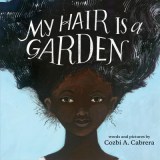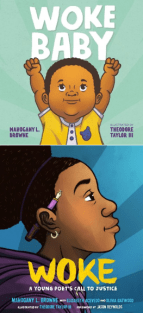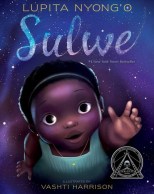You ever go back to a book or a movie that you loved as a kid, and just as you’re getting into it again, suddenly you’re sideswiped by something that makes you cringe? I’m not talking about convoluted plots or lackluster acting. I’m talking about the moment you realize that this thing you loved so much is racist. Or contains any number of outdated and harmful perspectives towards people of different faith, ability, skin gender, sex, orientation, or level of income.
.

Many of us have warm fuzzy feelings associated with classics that are deeply problematic. And listen: that is fine. Every reader has the right to read and enjoy the books of their choosing. And I’m certainly not advocating that we should ditch these items from our home collections or our public shelves. That would be censorship, and librarians aren’t cool with that. However, once we as readers become aware that something is potentially harmful, we then have the responsibility to remove or mitigate that harm. That’s why we have big bold warnings on cigarette packaging, and why our normal lives ground to a halt a few months ago in the face of a deadly pandemic. So, how do we handle problematic books? To read, or not to read? There are
strong arguments for both sides, and there’s no one right way. It’s
a challenge to provide an age-appropriate context to our kids when we adults are still trying to educate ourselves about our country’s history.
And if we do want to include some of these books with outdated perspectives in our reading, it might be helpful to choose additional books to read as a “counterbalance”, to better reflect the world in which our young readers currently live. To help with these decisions, here are some problematic classics and contemporary solutions.

One more note before we delve in: the idea of a Classic Book or any canon of literature, is a construct. We made it up. Classics were decided by people with loud voices: people with access to good education, good jobs, stable finances, and influential social circles. (And yes, this usually means white men, as well as folks who received the endorsement of white men.) Now, in 2020, we have the unprecedented ability to not only hear those voices that have been historically quiet, but also to amplify them to a level that they deserve. We get to determine for ourselves what books, movies, and other artifacts of culture are truly important enough to wear the label of “classic” and pass on to our children.
______________________________
The Problem: Wilder’s unsympathetic portrayal of Native Americans. A character says at one point, “The only good Indian is a dead Indian.” I’m not sure if that’s before or after Pa participates in a minstrel show, but oh yeah, that’s in there, too.
The first book in the five-book series following Omakayas through her daily life as an Ojibwa girl near present-day Lake Superior in the 1840s. Voracious readers who love strong female leads, history, and slice-of-life stories will devour
these books with enthusiasm.
Park loved the Little House books as a child, and this story of a half-Chinese girl who settles with her family in the Dakota territory reflects the spirit of those pioneer tales while addressing their shortcomings.
______________________________
The Problem: While the story of Atticus Finch fighting against injustice and racism is a much-loved classic for adults and kids alike, it filters the story of a black man through a white lens. Black characters, who are often portrayed with negative stereotypes, don’t get to tell their own story.
A contemporary story of racism, violence, and injustice from the perspective of those who live it. Starr, a teenage girl with a strong family guiding her way, discovers her own power and her own voice. (Sound familiar?) With a story of police brutality and protests, it’s also a setting that will resonate with teens who are seeing it in their news feeds on a daily basis.
This Newbery Medal winner also centers on a young black female protagonist and explores racism and injustice, but like Mockingbird, it’s set in mid-1930s Jim Crow deep south.
______________________________
The Problem: Stereotyped portrayals of African and Asian ethnicities, plus it includes the idea that a non-white person could be on display in a zoo. There are plenty of other subtle and not-so-subtle instances of racist caricatures in the Seuss lineup.
Ada Twist is a curious little girl bound to become a scientist, and this book takes readers slyly through the scientific process, leading them along with a strong rhyming structure and a distinctive illustration style. It’s fun and funny, and when you’re done with Ada, there’s Rosie Revere, Engineer and Iggy Peck, Architect.
This picture book revolves around a boy, a grandmother, and a bus ride. It’s simply told and simply illustrated, but this winner of the Newbery Award, Caldecott Honor, and Coretta Scott King Illustrator Honor has already become a new classic. And don’t make this your last stop: also check out de la Peña’s tear-jerker Love, and Robinson’s wordless reality-bender Another.
______________________________
The Classic: The Berenstain Bears series by Stan and Jan Berenstain
The Problem: The Berenstain Bears mirror a stereotypical homogeneous nuclear family: one boy, one girl, one stay-at-home mom who rules the house with an iron claw and dispenses moral proclamations while wearing a housedress, and a bumbling dad who needs more parenting than the kids. All the same species/color, I might add. Maybe some families looked like this, once upon a time in a land far away, but this is not what they look like now. Women have jobs, men contribute more to housework and parenting, and families are more diverse than ever with blended families, single parents, same-sex parents, and mixed-race families. Speaking of race, children’s publishing has a huge problem with diversity, and
a sobering report from 2018 showed that bears, rabbits, and other anthropomorphized critters were depicted in children’s books more than all non-white races combined. The beloved bears aren’t necessarily
bad, but they’re not really relevant, either.

Jabari is a little boy whose dad takes care of him and his sister, and Dad offers light but steady support as his son learns how to face his fears on his own. And keep your eye our for Jabari’s return in a second book slated for release this fall!
Okay, okay, so you want your beginning reader to sink their teeth into a massive series of books, and they’re a sucker for animals. Best friends Elephant and Piggie explore the nuances of patience, sharing, including friends of differing abilities, and generally being a good friend, but they’re more fun and way less heavy-handed than the bear family.
 Many of us have warm fuzzy feelings associated with classics that are deeply problematic. And listen: that is fine. Every reader has the right to read and enjoy the books of their choosing. And I’m certainly not advocating that we should ditch these items from our home collections or our public shelves. That would be censorship, and librarians aren’t cool with that. However, once we as readers become aware that something is potentially harmful, we then have the responsibility to remove or mitigate that harm. That’s why we have big bold warnings on cigarette packaging, and why our normal lives ground to a halt a few months ago in the face of a deadly pandemic. So, how do we handle problematic books? To read, or not to read? There are strong arguments for both sides, and there’s no one right way. It’s a challenge to provide an age-appropriate context to our kids when we adults are still trying to educate ourselves about our country’s history.
Many of us have warm fuzzy feelings associated with classics that are deeply problematic. And listen: that is fine. Every reader has the right to read and enjoy the books of their choosing. And I’m certainly not advocating that we should ditch these items from our home collections or our public shelves. That would be censorship, and librarians aren’t cool with that. However, once we as readers become aware that something is potentially harmful, we then have the responsibility to remove or mitigate that harm. That’s why we have big bold warnings on cigarette packaging, and why our normal lives ground to a halt a few months ago in the face of a deadly pandemic. So, how do we handle problematic books? To read, or not to read? There are strong arguments for both sides, and there’s no one right way. It’s a challenge to provide an age-appropriate context to our kids when we adults are still trying to educate ourselves about our country’s history.













